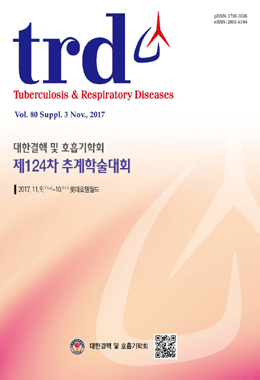Objectives: Pulmonary alveolar proteinosis (PAP) is a rare lung disease, but its prevalence and incidence of PAP are not well defined. We investigated the prevalence and incidence of PAP by using nationwide claims data from Korean health insurance review and assessment service.
Methods: Cases of PAP were identified for any visit between 2010 to 2016 that listed the Korean Classification of Disease, 7th edition code of PAP (J84.0) and rare incurable disease exempted calculation code (V222). A narrow case definition was defined as follows: 1) more than two PAP-coded visits within 1 year of the first claim, 2) more than one claim for both chest computed tomography and diagnostic procedures (bronchoscopy or surgical lung biopsy) within 90 days of the first claim.
Results: A total of 182 patients (narrow, n=82) visited medical institutions for PAP during the study period, and 89 patients (narrow, n=66) were newly identified between 2012 and 2016. The 7-years prevalence of PAP was 4.44 (narrow: 2.27) per 106 people. The incidence rate was 0.56 (narrow: 0.41) per 106 population at risk. The highest incidence peak in men and women were 50-59 years, but women showed bimodal age distribution due to the second incidence peak in 20-29 years. For incidence cases, mean age was 50.8 years, the highest peak age was 50-59 years, and male predominance was observed (male-to-female ratio: 1.82).
Conclusions: The prevalence and incidence of PAP in Korea were low, similarly to those in other countries, and middle-aged men showed the highest risk.




